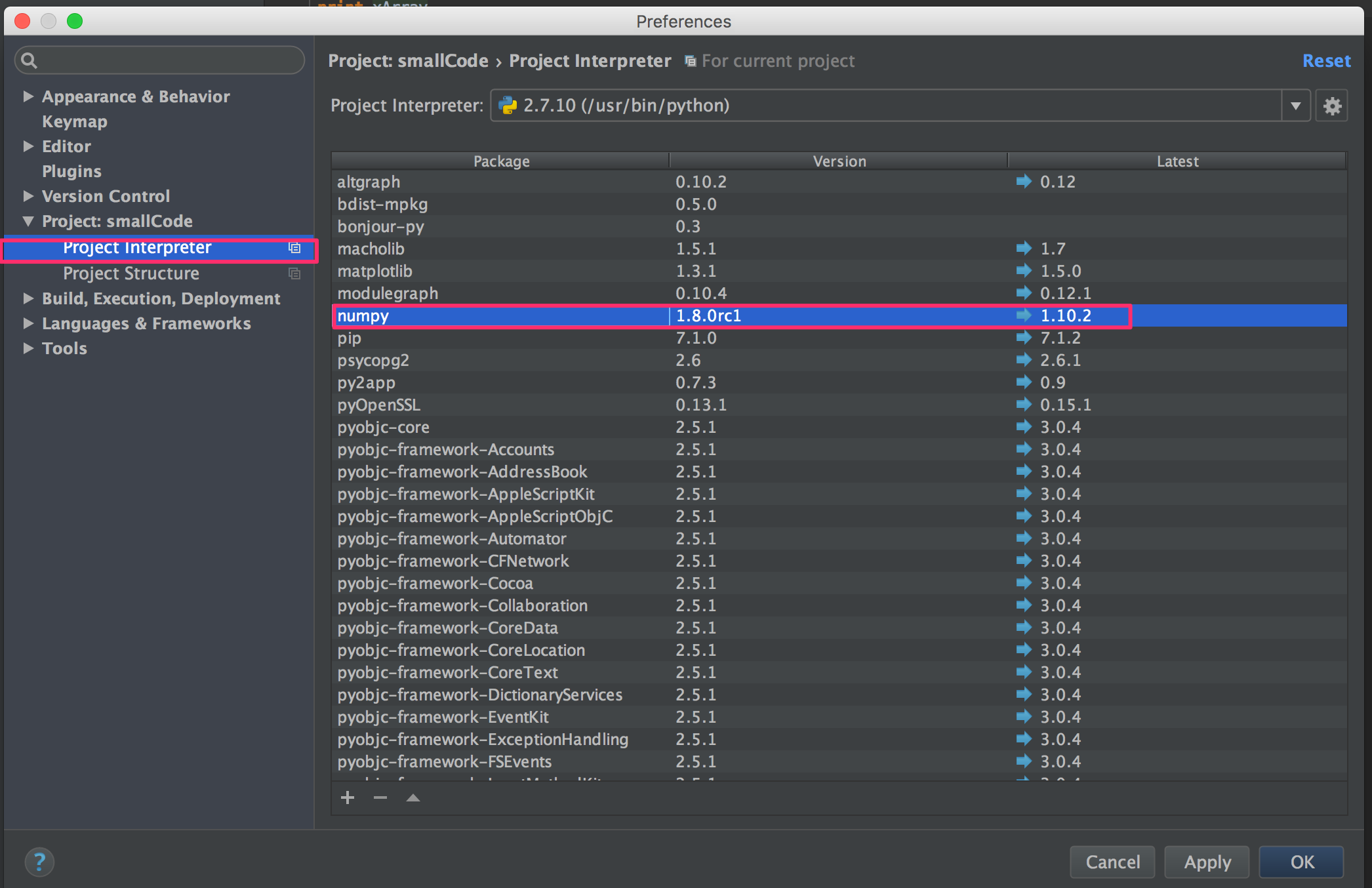
By default, if you close your Terminal, the environment is deactivated.
Numpy for mac install#
Once an environment is activated, all the install commands will apply only to the current environment. You can read more about Python environments in the documentation.
Numpy for mac free#
Next, let’s follow best practices and create a new Python environment, named work (feel free to use a different name), in which we can install NumPy, SciPy and Matplotlib: 1 python3.9 -m venv work 2 source work/bin/activateĪt this point, your prompt should indicate that you are using the work environment. This is what I see if I run python3.9 on my machine: 1 % python3.9Ģ Python 3.9.3 (v3.9.3:e723086bc3, Apr 2 2021, 08:20:09) 3 on darwin 4 Type "help", "copyright", "credits" or "license" for more information. python3 will also invoke the latest installer version of Python 3. If this is the case, you can select which version you want to use by specifying the version number, e.g.: 1 python3.8Īfter the above, you can invoke Python 3.9 using the python3.9 command. You can have multiple Python 3 versions installed on your macOS machine. The official installer of Python is a pkg file that will start a GUI installer which will guide you through the installation. In this article, we are going to use the latest stable version of Python which, at the time of this writing is 3.9. Once the Command Line Tools are installed, we can install Python.Īs a side note, after you install the Command Line Tools, you will also get a slightly older Python 3 version (3.8). Open a Terminal and write: 1 xcode-select -install Please note, that you will need the Command Line Tools even if you’ve already installed Xcode.


Start by installing the Command Line Tools for macOS. In this tutorial, we’ll use Python 3.9 which is the latest stable release of Python at the time of this writing. Python 3 is the future and it is supported by all major Python libraries. MacOS Big Sur comes by default with Python 2.7 which, at this point, receives only bug fixes and is EOL since 2020. If you have an arm64 Mac, also called Apple Silicon, please check my other article.
Numpy for mac how to#
In this article, I will show you how to install Python with NumPy, SciPy and Matplotlib on macOS Big Sur. Note: you may need to restart the kernel to use updated packages.Solarian Programmer My programming ramblings Home Archives Contact Privacy Install Python with NumPy, SciPy and Matplotlib on macOS Big Sur (Intel version) Posted on Octoby Paul Keras-Applications, imageio, h5py, bqplot, bokeh, altair Scipy, scikit-learn, PyWavelets, patsy, pandas, matplotlib, Keras-Preprocessing, Required-by: tensorflow, tensorflow-estimator, tensorboard, statsmodels, seaborn, Location: /srv/conda/envs/notebook/lib/python3.7/site-packages Summary: NumPy is the fundamental package for array computing with Python. Once you’ve successfully installed NumPy, you can use the following command to display the NumPy version in your environment: pip show numpy You can then run the same pip command as earlier to install NumPy: pip install numpyĪt this point, the error should be resolved.
Numpy for mac upgrade#
You can also use these steps to upgrade pip to the latest version to ensure that it works.

If you’re still getting an error, you may need to install pip. You can run the following pip command to install NumPy: pip install numpyįor python 3 you can use: pip3 install numpy

The easiest way to do so is by using pip, which is a package manager for Python. Since NumPy doesn’t come installed automatically with Python, you’ll need to install it yourself. This tutorial shares the exact steps you can use to troubleshoot this error. This error occurs when Python does not detect the NumPy library in your current environment. One common error you may encounter when using Python is: Import error: no module named ' numpy'


 0 kommentar(er)
0 kommentar(er)
